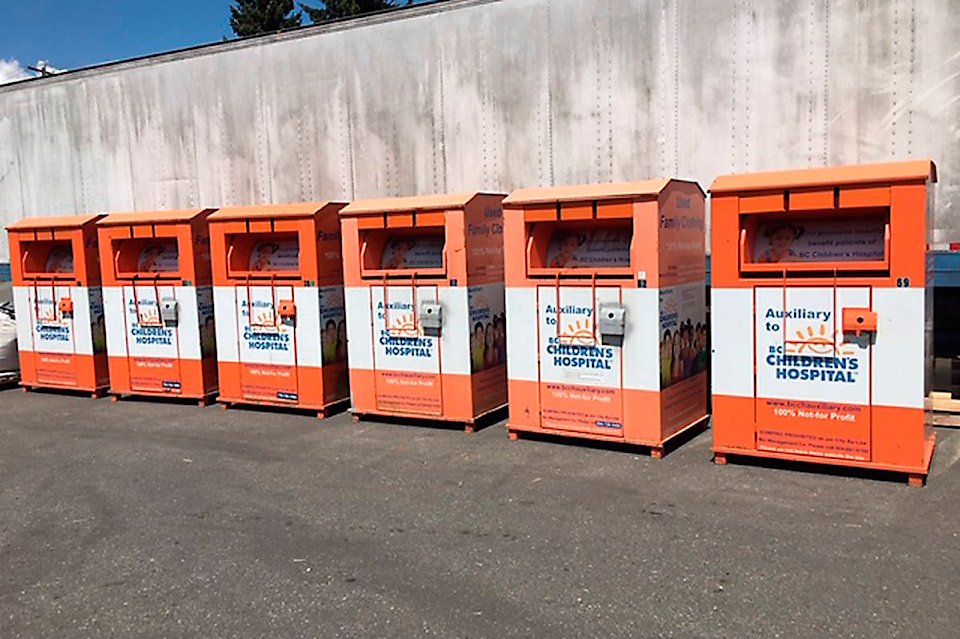For one local charity, a row of clothing donation bins in Surrey helps form a financial lifeline during the COVID-19 pandemic.
BC Children’s Hospital programs benefit from the sale of items collected in orange-coloured donation bins now located at Surrey Transfer Station (9770 192nd St.), via the hospital auxiliary.
Erin Rylek, the organization’s program & volunteer co-ordinator, said the clothing donation bin program is the auxiliary’s only source of income not greatly affected by the pandemic.
The auxiliary was forced to close its thrift and gift shops, and cancel campus vendor programs and its annual silent auction.
“We partner with Salvation Army for this (donation bin) initiative,” Rylek told the Now-Leader. “The clothing being donated to the bins is recycled back into the Surrey community and is also given to local shelters, which have seen an increase of need during the pandemic.
“The Auxiliary is also a non-profit charity so community support is vital to our success in funding programs at BC Children’s Hospital,” she added. “We are so pleased to work with Emterra at Surrey Transfer Station.”
Only clothing, footwear and accessories can be dropped into the bins. The collected goods are later resold at Salvation Army thrift stores.
The funds benefit a variety of BC Children’s Hospital programs, including Fun Cart, a Treasure Chest program, music therapy, free coffee nights, and therapeutic clowns.
In March 2020, the Auxiliary to BCCH supported a funding request of $60,000 to the Heart Centre, which had an urgent need for two TEE probes, used to assess the condition of a child’s heart — how large the heart is, how well it contracts, and how the valves function, Rylek noted.
“The long flexible instrument has an ultrasound transducer at the tip and is passed through a child’s mouth towards the throat to get as close to the heart as possible. It can be moved up, down and sideways to look at different parts of a child’s heart from different angles to get the best possible view. TEE probes are used in all 200-plus open-heart surgeries performed every year. They help surgeons save lives.”
tom.zillich@surreynowleader.com
Like us on Facebook Follow us on Instagram and follow Tom on Twitter
